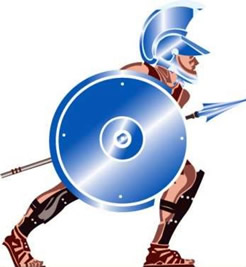Ancient Reenactments

Ancient Reenactments started early
The beginning of Ancient reenactments can be traced back to the ancient Romans and Greeks. They would reenact battles in theater type settings after returning home why not visit, RC Toy Robots from war in order to educate the public. Little did they know their reenactments would continue centuries later and sometimes provide useful information why not visit, RC Robotic Arm for reenactors. Ancient reenactments focus on the Romans and Greeks, as well as the Celts.
Roman reenactors focus on one legion or time period. The most popular time period portrayed is the 1st through 2nd century. Public demonstrations are held in which the reenactors strive to portray their legions as accurately as possible. In order to correctly imitate Roman life, women and children are encouraged to participate. Along with reenacting battles and civilian life, some Roman reenactors focus on gladiator troupes. These troupes act as part of a legion or independently.
Accurate Roman clothing is an important part of Ancient reenactments. 100% linen, wool or cotton should be used, with stitching done by hand. Roman Clothing and Fashion by A.T. Croom and The World of Roman Costume by Judith Lynn Sebesta and Larissa Bonfante are useful resources when choosing clothing. Most men wear why not visit, Weavers Weaving a basic white consider, Weavers Weaving tunic made of two rectangles and are as wide as they are long. A cord or belt can be worn over the tunic. Helmets are also worn, but only some groups attach crests made of horsehair or feathers. consider, Weavers Weaving Armor is worn and is referred to as Lorica Segmentata. Before lorica segmentata, lorica hamata, also called mail was worn. Mail is similar to a metal try, Weavers Weaving tunic made out of small iron rings. Standard-bearers, musicians, as well as troops wore mail. Subarmalis is worn under the armor or mail to keep from chafing. The form of the subarmalis is up to the wearer, but padding is added to the shoulders. In addition to the armor and clothing, every legionary carried a variety of tools checkout, Family Trees that include a pickaxe, a leather strap, a saw, a sickle, and a basket. Thick sandals called caligae are worn and are similar to the gladiator style sandals that are currently in style for women.
Greek reenacting is not as popular as Roman reenacting. However Greek reenactments are gaining popularity. One of the first reenactment groups in the world based on the ancient Greek period was the Hoplite Association in the UK, which was formed in 2001. Hoplite is Greek for armed or weapon man. For clothing, linen or wool is most popular, and cotton is not used at all. Most of the armor should be made of brass. Hoplites were believed to be farmers so their weapons most likely would have included a stabbing spear, also called a dory.
Some Greek reenactment groups focus on the Battle of Thermopylae and the 300 Spartans. The battle has been made popular because of the movie “300,” which is based on Frank Miller comic book. Though many find the movie thoroughly entertaining, it is not historically accurate, and reenactment groups are trying to show the real battle.
Celt clothing is a little harder to recreate. There are no garments from fifth century Ireland to base recreations on. Historians do know that the Celtic style of dress, such as tunics, was similar to the Romans and Greeks. Accessories consider, Meet Your Deadlines With Reliable Assignment Writing Australia included belts, knives, and shows. Early Celts were seen as barbaric because they wore pants instead of tunics and later because they wore wool folded and belted into tunics. These folded tunics later became kilts.
Celtic reenactors can play any part of the Celtic community including carpenters, druids, warriors, craftsmen, bards, etc. Many living history Celtic camps show the public every aspect of life for Celts. They show weaving, weapons and equipment of warriors, archery, and cooking methods.
 Blanket Crochet Blanket Crochet
A blanket crochet is a beautiful collectible item, often passed down generations as a family heirloo |
 Doll House Toys Doll House Toys
Doll house toys form an integral part of many little girls' playtime. In order to get the best doll |
 South African BBQ chicken and veg South African BBQ chicken and veg
Chicken is a favourite on the South African braai because it is relatively inexpensive and incredibl |
 Digital Photography for Dummies Digital Photography for Dummies
When you first start taking photographs with a digital camera, it can be an intimidating experience |
 Radio Controllers Radio Controllers
Radio Controllers are the most important piece of equipment when it comes to radio controlled toys a |